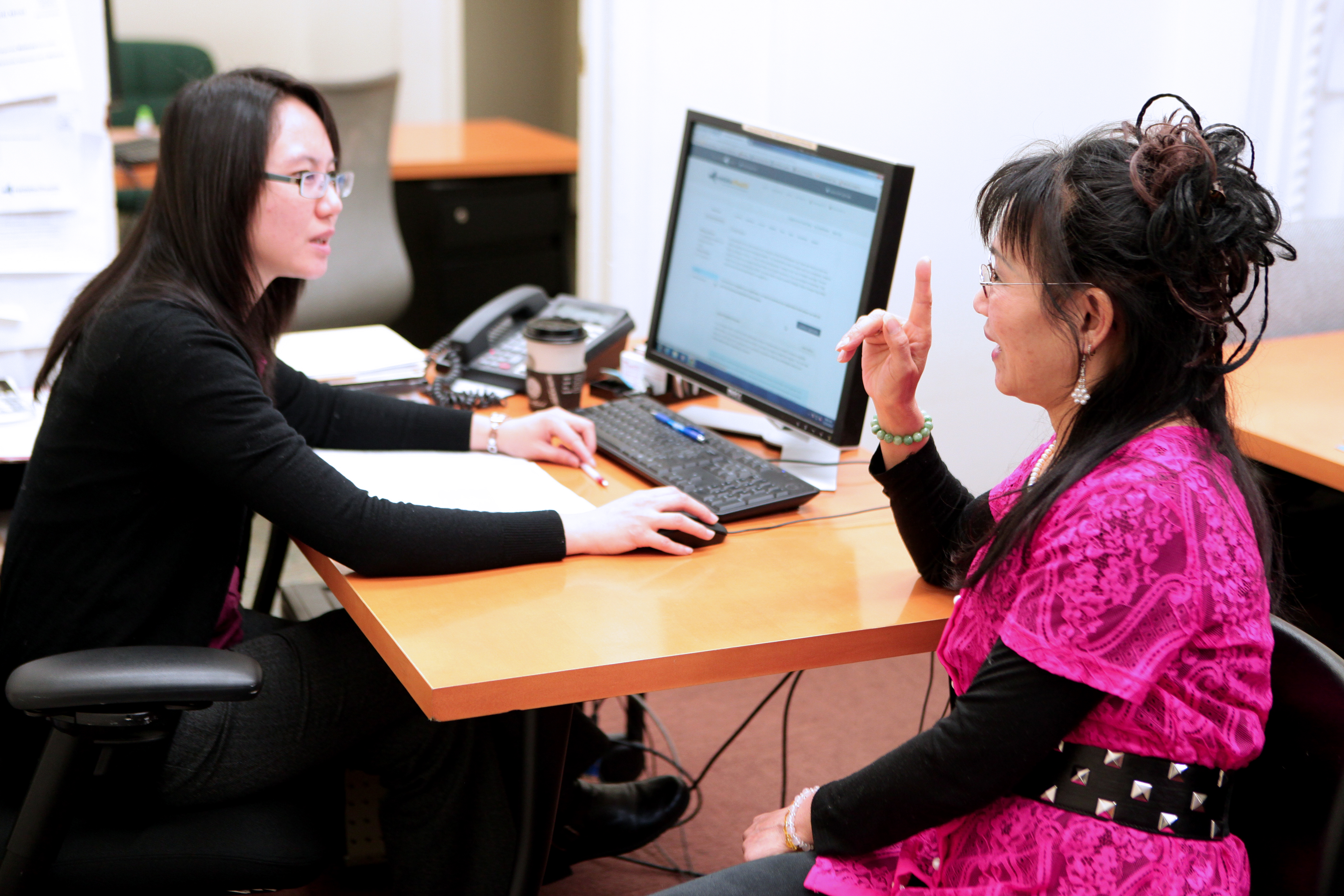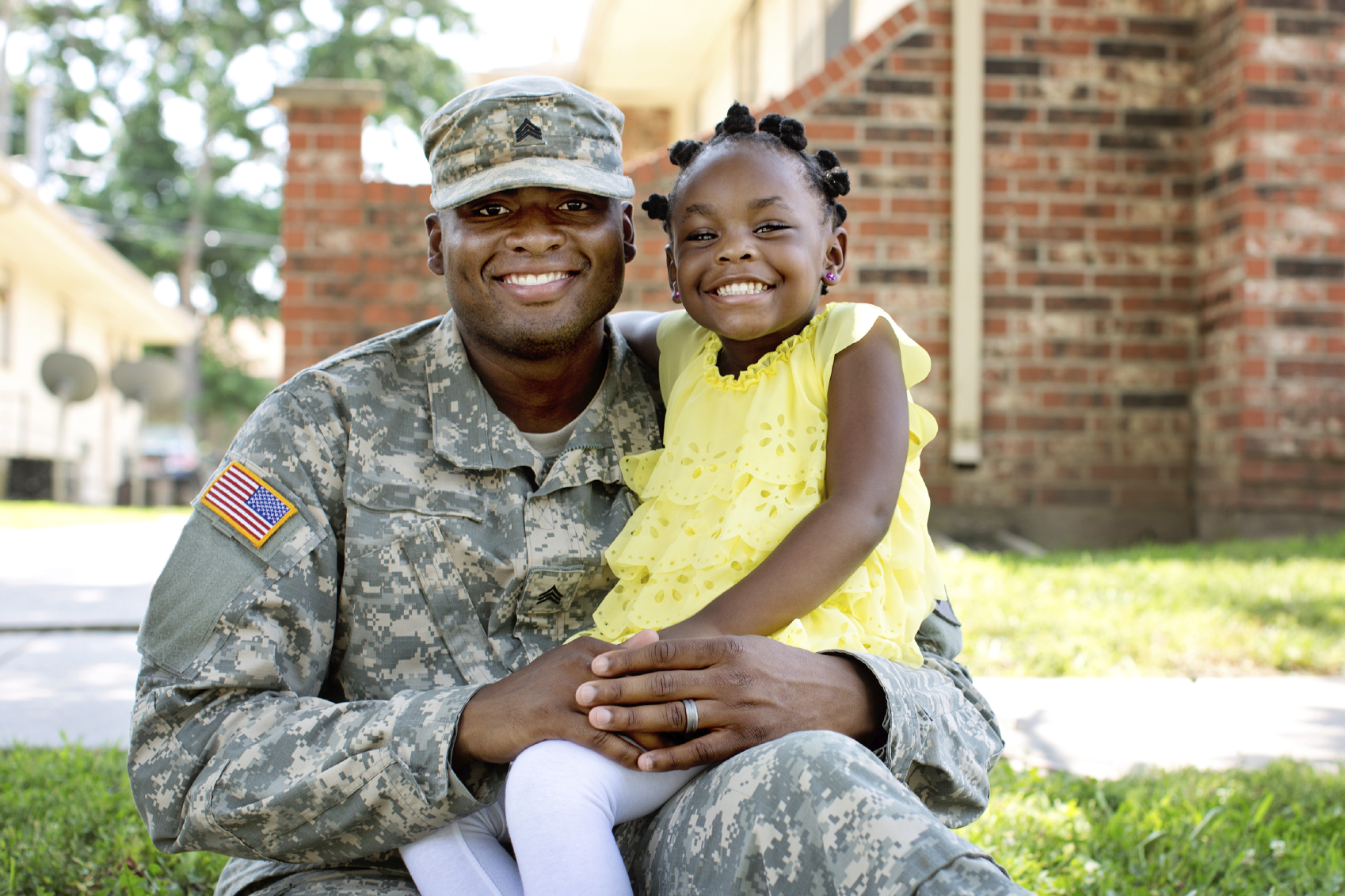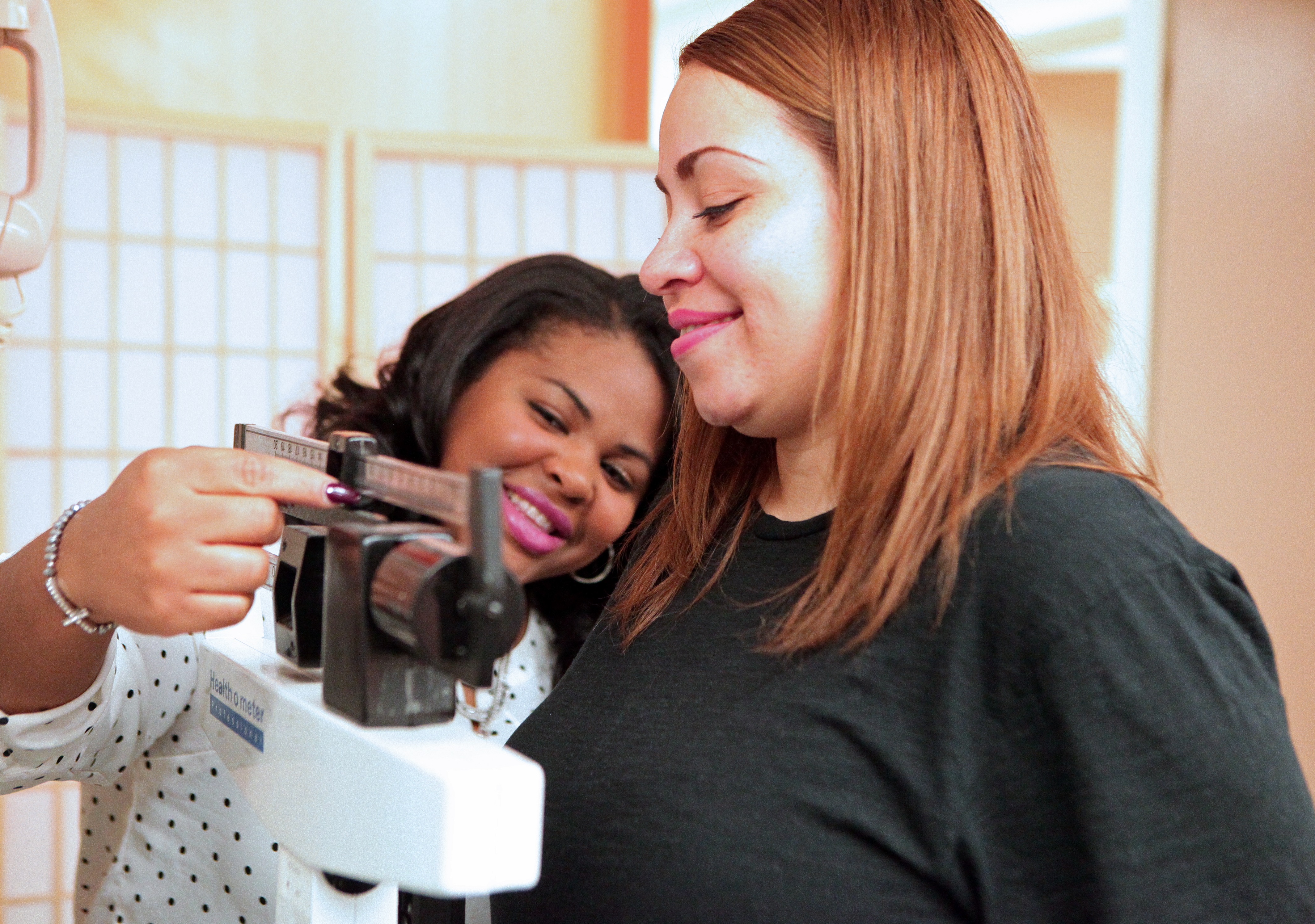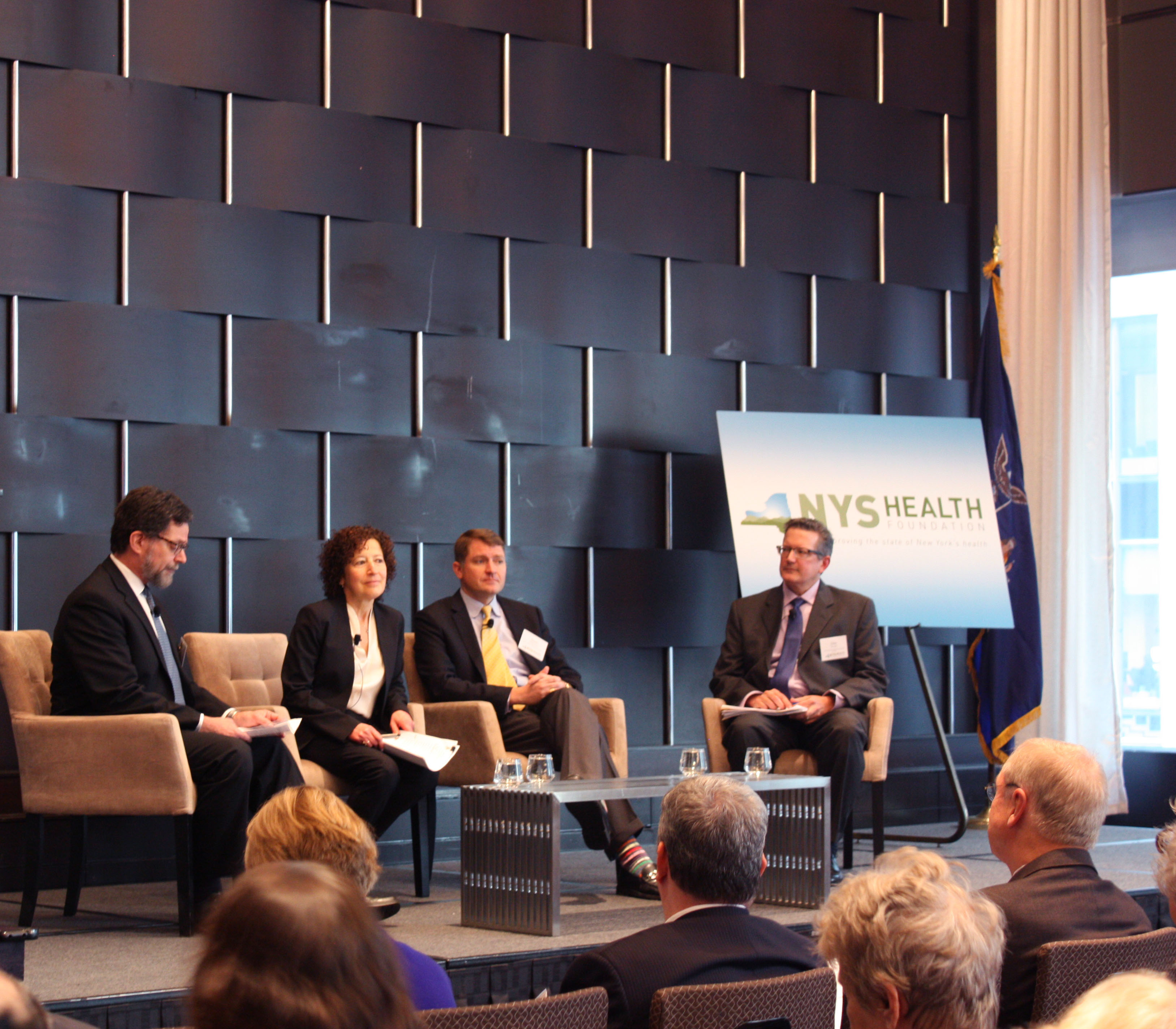This Year’s Highlights
Building Momentum for Healthy Communities
Through our Healthy Neighborhoods Fund initiative, launched at the beginning of 2015, NYHealth awarded a total of $2 million over two years to six communities across New York to help them become healthier, more active places for residents: Clinton County; Brownsville, Brooklyn; North End, Niagara Falls; East Harlem; Near Westside, Syracuse; and Two Bridges, Lower East Side. Grantees in these neighborhoods have been working to engage residents, community partners, businesses, and other stakeholders to increase access to healthy affordable food; improve access to safe places for exercise and play; and connect adults and children to programs that encourage healthy behaviors.

In Clinton County, the county health department (CCHD) is working with local small business owners (seven to date) to implement the Better Choice Retailer program, a healthy small food retailer certification program at convenience stores. Participating convenience stores now are offering consumers healthier alternatives, including low-fat dairy products, lean protein, 100% whole grains, zero-calorie beverages, and fresh fruits and vegetables. Clinton County also surpassed its goal to increase participation in physical activity among children and older adults. The older adult population saw a 300% increase in registration for a local walking challenge; CCHD is keeping participants engaged through weekly tips, suggested walking routes, and photo sharing through social media. Local youth also participated more in organized events. In October, the annual Trick or Trot run event for children was up 68%, and there was an 82% increase in new participation in fall events, including play mobs at area playgrounds (a take on the flash mob concept).
In Brownsville, Brooklyn, Community Solutions has been working across sectors through its Brownsville Partnership to improve the health of the neighborhood. Brownsville Partnership has also worked closely with the NYC Department of Transportation to introduce bike lanes and crosswalks on busy throughways. It partnered with the NYC Housing Authority to renovate a dilapidated but highly used neighborhood basketball court and with the NYC Department of Health and Mental Hygiene to ramp up its Healthy Bodega program. A corps of neighborhood youth took on the task of beautifying and bringing new life to Belmont Avenue through street clean-ups, an installation of a mural advocating for Brownsville to work together, and a summer series of street festivals. Planet Fitness, the first health and fitness club in the neighborhood, also opened; in its first five months, more than 2,500 residents have joined.
In the Highland Avenue and Hyde Park neighborhoods of Niagara Falls, the Create a Healthier Niagara Falls Collaborative started a series of pop-up park events as a way to activate underused parks and empty lots. During these events, residents use recycled materials to build temporary structures and other artwork, as well as engage in other activities to promote community transformation for health. The Field & Fork Network, a member of the Collaborative, helped the Niagara Falls City School District submit a successful proposal to the USDA Farm to School grant program. This grant will help the school district develop a network of local farmers to provide produce, dairy, and meat products to the district’s food service program. Field & Fork also received additional NYHealth support to grow its Double Up Food Bucks initiative, which creates incentives for the use of SNAP benefits at farmers markets.
In East Harlem, community partners launched the Fresh Food Box program in September, with 38 families signed up to date. The initiative allows residents to purchase a selection of fresh, healthy produce at an affordable cost. At the pick-up site, a public space has been created for community organizations to conduct outreach to residents and link them to services and health resources. East Harlem also launched a walking trail committee comprising residents and local organizations to design routes that highlight community assets and connect the East River Esplanade with Central Park
In the Near Westside neighborhood of Syracuse, renovations to the soccer court box at Skiddy Park—the main park located at the neighborhood’s center—were completed, and a ribbon-cutting ceremony was held in August as part of an annual community block party celebration. The Lerner Center for Public Health Promotion, in collaboration with the Near Westside Initiative and the City of Syracuse Parks Department, also secured an agreement with the police department to relocate the Westside police substation to Skiddy Park. This was in response to community members’ safety concerns over using the newly renovated park space. The Lerner Center published these community safety issues, along with recommendations to address them, in a report, “Take Back the Streets.” In response to the report, neighborhood leaders and other community service providers will take on a “50 in 52” challenge in 2016—organizing 50 indoor and outdoor community events over 52 weeks to increase social cohesion and help residents develop trust and a sense of safety in their community.
The Two Bridges Neighborhood Council (TBNC) was recognized in September for its role in helping to bring bicycle infrastructure to the community—NYC’s 1,000th mile of bike lanes was installed in the neighborhood. TBNC has been in active discussions with a building developer that is constructing the first luxury high-rise in this low-income neighborhood comprising mostly public housing. The new building is being constructed on the same lot where the area’s only full-service supermarket was previously located. TBNC has secured a commitment from the developer to include a supermarket in one of the retail spaces, and is in talks to ensure it is an affordable addition to the neighborhood.
Making Health Care Work for Consumers and Patients
In 2015, NYHealth continued efforts to make our health care system work better for consumers and patients. First, we made progress on advancing payment reform that can lead to better care and outcomes for patients; second, we pushed for more transparency related to quality and prices to empower consumers to make informed decisions about their care.
When we set out on a path to payment reform, one of our goals was to see by 2017 a statewide proposal that shifted payment away from fee-for-service. That goal was realized sooner than expected: New York launched its Medicaid waiver, the Delivery System Reform Incentive Payment program, with the premise that by its end 80–90% of Medicaid managed care payments would be made using value-based payment methods. New York’s State Health Innovation Plan seeks 80% of commercial primary care payments to be value-based in 5 years. The federal Center for Medicare and Medicaid Innovation is sponsoring numerous demonstration and pilot programs in accountable care, bundled payments, and shared savings. Through nationwide and statewide efforts, health systems are now shifting away from fee-for-service toward alternative payment methods that provide incentives for more effective care.
To better understand the penetration of alternative payment arrangements, NYHealth supported Catalyst for Payment Reform to produce the first-ever New York State Scorecard on Payment Reform, released last spring. This scorecard shows how we are paying for health care and the types of value-oriented arrangements that are being used. The New York State Scorecard, conducted with the participation of all the health plans in the State, is the first in the nation to use comprehensive and fully representative data for the commercial market and the first ever to evaluate payment arrangements in the Medicaid market. It found that 94% of commercial health care reimbursement payments in New York are still fee-for-service and 15% of all value-oriented commercial payments place doctors or hospitals at some degree of financial risk for their performance. In Medicaid, 73% of health care reimbursement payments in New York are fee-for-service and 46% of all value-oriented payments place doctors or hospitals at some degree of financial risk for their performance. These findings give New York State a true baseline for efforts to shift payment away from fee-for-service.
In 2015, NYHealth awarded a grant to the All-Payer Claims Database Council (APCD Council) to prepare a report on the issues related to the development of regulations and policies for an all-payer database (APD) in New York State. The key findings and recommendations of the report, “New York’s All-Payer Database: A New Lens for Consumer Transparency,” highlighted growing interest in the APD’s potential to provide price and quality information for consumers.
Looking ahead, this work related to payment reform and transparency will inform a new NYHealth priority area for 2016: Empowering Health Care Consumers. To ensure that consumers have the tools, resources, and support they need to make informed decisions about their health care, the Foundation is committed to increasing consumers’ choice, control, and convenience. Work in this area is likely to include an emphasis on encouraging clearer pricing and disclosures of prices by providers; developing price and quality comparison tools; promote public policies that encourage transparency; and fostering appropriate levels of competition and choice in both health insurance and provider options.
Enrolling More New Yorkers in Coverage
More than 2.1 million New Yorkers have signed up for coverage since the Affordable Care Act extended health insurance coverage. Of these enrollees, approximately 89% were previously uninsured, according to State reports. Recent U.S. Census Bureau numbers also show the progress made: New York’s uninsured rate among the general population declined to 8.7% in 2014, from 10.7% in 2013. However, despite these successes, an estimated 1.4 million New Yorkers remain uninsured.
In 2015, NYHealth built on previous efforts to help New Yorkers understand their health insurance options and enroll in coverage. In advance of the third open enrollment period beginning November 1, 2015, the Foundation renewed its support for a statewide Enrollment Network initiative to engage uninsured New Yorkers and help them complete enrollment applications. Comprising community-based organizations from across the State, the Enrollment Network serves all New Yorkers but specifically targets outreach and enrollment efforts to populations known to be uninsured at disproportionately high rates: low-wage workers; immigrants; and lesbian, gay, bisexual, and transgender individuals.

An October 2015 NYHealth report highlighted the successes, challenges, and lessons learned from the first two years of the Enrollment Network’s outreach and education efforts. Since its launch, the Enrollment Network has enrolled tens of thousands of New Yorkers in coverage.
To complement the State’s enrollment strategy, NYHealth has supported the Empire Justice Center’s Ambassadors for Coverage program, which trains community-based organizations throughout the State to provide an on-the-ground presence in hard-to-serve communities and encourage health insurance enrollment. The Ambassadors provided an essential link between consumers and enrollment assistors. In 2015, NYHealth awarded Empire Justice Center a renewal grant to target populations that have been left out of previous enrollment efforts.
Expanding Primary Care Access Through Community Health Centers
With the implementation of federal health reform, enhanced primary care access and capacity are necessary both to care for the influx of newly insured patients and to ensure a strong safety net for those who remain uninsured. The Affordable Care Act provides billions in new funding for federally qualified health centers (FQHCs) to expand their reach and create new sites. One in 10 of every community health center patients nationwide is served by an FQHC in New York.

NYHealth has continued its work in expanding primary care across New York State by building the capacity of these community health centers around the State. A grant to the Community Health Care Association of New York State (CHCANYS) was vital to maximizing the amount of federal funding received by FQHCs to enable them to serve more patients. Under this grant, CHCANYS offered intensive, hands-on support to FQHCs to help them submit high-quality applications for the competitive federal New Access Point (NAP) awards. CHCANYS targeted community health centers from four regions of the State: Southern Tier, Finger Lakes, Central New York, and Western New York. Nearly all of the community health centers that received assistance from CHCANYS were recipients of the NAP awards, including the Greater Hudson Valley Family Health Center (GHVFHC), the Regional Health Care Network, the Chautauqua Center, the Community Health Center of Buffalo, and the Oak Orchard Community Health Center.
One of the award recipients, GHVFHC, had received a previous grant from NYHealth to help grow primary care centers in medically underserved regions of New York. With our seed funding for planning and assessment, GHVFHC laid the ground work to bring the first FQHC to Broome County in the Southern Tier. Now with federal funds to make it a reality, the GHVFHC Binghamton health center is set to open early in 2016, in close proximity to public housing residents.
New York State received 17 NAP awards in 2015, totaling $9,741,841 to serve an estimated 65,309 new patients. Together, the five health centers that received assistance from CHCANYS received more than 50% of the NAP funding in New York State.
In addition, New York City Mayor Bill de Blasio announced in 2015 the $20 million Caring Neighborhoods initiative to provide pre-development support for community health centers to expand in underserved neighborhoods. The Mayor’s initiative also updated an analysis sponsored by NYHealth in 2013 (and regularly cited in mayoral campaign materials) to identify the New York City neighborhoods that would most benefit from a new community health center. The Caring Neighborhoods initiative will expand primary care services to more than 100,000 New Yorkers.
Informing Communities About Environmental Health Hazards in Schools
At P.S. 51, an elementary school in the Bronx that was sited in a former lamp factory, children had been reporting assorted illnesses over the years. Testing at P.S. 51 revealed dangerous levels of toxins, but parents weren’t informed for more than six months; when a report was finally released to the community, it was too technical to be properly understood.
NYHealth awarded a grant to New York Lawyers for the Public Interest (NYLPI) to reach out to P.S. 51 and other school districts to redress this problem and improve school siting policies and practices. NYLPI instituted ongoing trainings for community boards, parents, teachers, elected officials, and other school community members to help them learn to navigate the complex school siting system and advocate for the information they need. To reach more schools, NYLPI also developed and distributed a series of practical tool kits that explain how community members can get involved in safe and healthy school siting, construction, and renovation practices.

The impact of NYLPI’s work reached beyond the grant’s funding period. A law passed in 2015 requires the City Department of Education (DOE) to inform parents and school staff within seven days of any environmental test results that show potential health threats in public schools or proposed sites. It also requires the DOE to publish all environmental inspections to its website, and to publish biannual reports for the City Council and the public summarizing the test results of every environmental inspection and site assessment, as well as plans to mitigate risks. A blog post written by NYHealth staff for Philanthropy New York’s PhilanthroPost highlights the grant’s short-term outcomes, as well as the larger, broader impact that grew out of this work after the close of the grant.
Pushing for Coverage for Undocumented Immigrants
Advocating health coverage for all remains a part of NYHealth’s mission. While opportunities for affordable health care coverage have expanded for many New Yorkers, a significant group has been left behind: undocumented immigrants. It is estimated that 625,000 individuals in New York State are undocumented, and their access to public or private health insurance options is highly restricted.
Along with funding partners from the Altman Foundation, New York Community Trust, and the United Hospital Fund, NYHealth awarded the Community Service Society of New York (CSS) a grant to conduct a rigorous examination of the costs, design, and feasibility of multiple insurance options for undocumented immigrants in New York State. In 2015, NYHealth convened a roundtable discussion with funding partners, advocates, and experts to unveil these insurance proposals and discuss the draft results of CSS’s analysis. In late 2015, CSS and fellow advocates began a series of meetings in Albany to share the proposals and educate policymakers. A public report of the insurance proposals and the analysis will be released by CSS in early 2016.

Undocumented immigrants can gain protected status if they qualify for Deferred Action for Childhood Arrivals (DACA), which was established by a presidential executive order in 2012. In New York State, those who receive DACA can qualify for Medicaid if they are income eligible. However, the eligible DACA population, immigrant-serving attorneys, and community-based organizations are largely unaware of this option, and national DACA campaigns overlook this uncommon benefit. In 2015, NYHealth awarded a grant to the Mayor’s Office of Immigrant Affairs (MOIA), through the Mayor’s Fund to Advance New York City as a fiscal sponsor, for an advertising and public education campaign to increase awareness of Medicaid eligibility and enrollment among DACA recipients and currently undocumented potential applicants. The campaign will reach more than 100,000 immigrants through targeted advertising, public education materials, and centralized resources. It is expected that the prospect of health insurance coverage will induce more young people to apply for protected immigrant status. The campaign will launch in early 2016.
Helping Community-based Organizations Navigate DSRIP
New York State’s Delivery System Reform Incentive Payment (DSRIP) program seeks to fundamentally transform the State’s Medicaid program. Community-based organizations (CBOs) are an untapped resource crucial to meeting DSRIP’s goals of reducing avoidable hospital use by 25% over 5 years. They are well positioned to address population health issues; have long-standing, trusted community relationships; and provide critical services to New York’s most vulnerable populations. However, CBOs often report that they have not been meaningfully engaged in planning processes, and that Performing Provider Systems (PPSs) do not leverage the resources already available within communities.
Without careful attention, the State risks not only losing entities that already care for New York’s highest-need residents, but also weakening the goals and outcomes of DSRIP. In 2015, NYHealth supported the Health and Welfare Council of Long Island (HWCLI) and Medicaid Matters New York (MMNY), through a fiscal sponsorship from the Schuyler Center for Analysis and Advocacy, to assist CBOs and safety-net providers during this massive shift in the health care delivery system.

On Long Island, HWCLI has set out to educate PPSs on the importance of CBOs in attaining DSRIP goals and to identify potential CBO partners for each PPS. It is helping CBOs augment their capacity and shift their organizational culture, and is providing training on value-based payments models. HWCLI will issue a final report that will call attention at the State level to Long Island- and suburban-specific needs, challenges, and lessons learned related to the DSRIP process.
MMNY is working in areas across New York State to inform PPS regions about the DSRIP process and to help CBOs better position themselves in the transformation. MMNY is conducting a statewide survey to determine CBOs’ readiness to engage in DSRIP and is connecting regions that have well-developed Medicaid consumer advocacy efforts with those that do not. Using results from this survey, MMNY will provide in-depth technical assistance to selected PPS regions to grow a sustainable infrastructure of CBOs involved in DSRIP. It will produce a final report with policy recommendations focused on ensuring that safety-net providers and CBOs are included in PPSs.
Expanding Resources for Veterans and Their Families
In 2015, NYHealth continued support for the Iraq and Afghanistan Veterans of America (IAVA) to help it expand its Rapid Response Referral Program(RRRP). RRRP provides free individualized case management support and referral services to veterans and families in need of help, from dealing with depression and stress to getting connected to health care, mental health, legal, housing, and employment services. Initially serving veterans in New York City, RRRP began expanding services across New York State with NYHealth support in 2013. With additional NYHealth funding in 2015, IAVA is broadening its outreach by partnering with institutions of higher learning, Supportive Services for Veteran Families sites in New York City and Long Island, and the U.S. Army base at Fort Drum, N.Y., to reach greater numbers of veterans in need of services.

NYHealth also awarded a grant to the Mental Health Association of New York City to advance the Veterans Mental Health Coalition (VMHC). VMHC is working to accelerate effective partnerships between the U.S. Department of Veterans Affairs (VA) and community mental health organizations and providers. In spring 2016, VMHC will convene behavioral health care providers, VA representatives, and funders to highlight existing models of partnerships already underway in New York, as well as encourage replication of such models among other New York City providers.
An NYHealth-supported report from the Syracuse University Institute for Veterans and Military Families (IVMF), released in April 2015, outlines the value of cross-sector collaboration among communities, the VA, local agencies, and other stakeholders to improve outcomes for veterans and their families. The report also takes a look at IVMF’s ongoing collective impact initiative, AmericaServes, and highlights preliminary outcomes from its first pilot network in New York City, NYCServes. The first of its kind in the nation, NYCServes is a public-private coordinated network of comprehensive services, resources, and care for transitioning servicemembers, veterans, and their families. By the close of 2015, the network had helped more than 1,200 veterans, servicemembers, and military families connect to health and social services across New York City.
Spreading the National Diabetes Prevention Program
Diabetes remains a prevalent chronic disease in New York State. An estimated 4.5 million New Yorkers have prediabetes, a condition that puts them at high risk for developing diabetes and its complications. As part of our Building Healthy Communities priority area, NYHealth has continued to support the dissemination of the National Diabetes Prevention Program (NDPP), a lifestyle intervention program that has been shown to help participants lose 5–7% of their body weight and reduce their risk of developing Type 2 diabetes by 50%.

In 2015, building on previous work to replicate the NDPP, NYHealth awarded Montefiore Medical Center a grant to earn Centers for Disease Control and Prevention (CDC) accreditation to offer the NDPP in-house. Montefiore will evaluate its efforts by tracking patient outcomes and health measures and will increase the number of classes available to patients. Similarly, we supported the development and implementation of the NDPP through a grant to Urban Health Plan (UHP), a federally qualified health center that serves disadvantaged sections of the Bronx. UHP is working toward becoming a CDC-recognized certified master trainer of the NDPP, ensuring comprehensive training of health educators and nutrition assistants, and is creating a sustainable system for health educators to deliver the NDPP across UHP sites to both employees and patients.
With support from NYHealth, The Fund for Public Health in New York launched an online NDPP pilot for New York City employees as part of a City workplace wellness initiative. Evaluations of the pilot will be completed to determine best practices in program participation and completion, health outcomes, and cost savings generated from the program, as well as the feasibility of offering the NDPP to City employees on a larger scale.
Finally, NYHealth awarded Healthcare Industry Grant Corporation, on behalf of 1199SEIU Labor Management Initiatives, a grant to offer the NDPP to 1199SEIU members, 35% of whom have prediabetes. The Healthcare Industry Grant Corporation established a pilot program in 2015 to screen 1199SEIU workers, with a goal of identifying at least 300 members with prediabetes and enrolling at least 100 members into the NDPP.
Engaging Stakeholders from Across the State and Beyond
Serving as a neutral convener of health and health care leaders is one of NYHealth’s hallmark strengths. Over the course of 2015, the Foundation hosted or co-hosted a range of conferences and other events that brought together health care providers, insurers, business leaders, policymakers, public health and community leaders, researchers, and other stakeholders from across New York and nationally.

Events in 2015 included:
From Innovators to Early Adopters: A Closer Look at Bridging Health Care and Population Health
NYHealth co-hosted this summit with the New York Academy of Medicine and NYU Langone Medical Center’s Department of Population Health to delve deeper into ongoing efforts in New York State and nationally that demonstrate effective collaboration between health care and other sectors to advance population health.
Competition and Consolidation in Health Care: Can We Get the Balance Right?
NYHealth hosted this conference to address New York State’s rapidly shifting health care market resulting from health system consolidation.
Briefing on the First-Ever New York State Scorecard on Payment Reform
NYHealth hosted a briefing on first-in-the-nation scorecards, developed by Catalyst for Payment Reform, that provide a detailed look into how health care is being paid for in New York State and the types of value-oriented arrangements that are being used.
Leveraging Big Data to Create a Value-based Health System: A Conversation with Ana English
NYHealth hosted a conversation to discuss how an all-payer database can be used as a consumer-friendly price transparency tool to support payment reform.
A Conversation About Mass Incarceration and Public Health: From Punishment to Treatment?
NYHealth hosted a conversation about mass incarceration and public health to discuss expanding health and social services for individuals involved with the criminal justice system.




